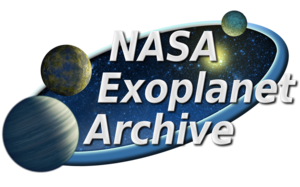The transmission spectroscopy table contains wavelength-dependent transit measurements from the published literature. The transit measurements are published as either transit depths, planet-to-star radius ratios, or planet radii, and span wavelengths across the electromagnetic spectrum.
Please note that the Transit Spectroscopy table is periodically updated. When referring to it, please cite the DOI: 10.26133/NEA10, e.g. in your reference list, and record the date/time of access.
bibtex (built from https://doi2bib.org/bib/10.26133/NEA10 but edited to include a version tag, which works with AASTeX aasjournal.bst style file)
@misc{transitspec,
doi = {10.26133/NEA10},
url = {https://catcopy.ipac.caltech.edu/dois/doi.php?id=10.26133/NEA10},
author = {{NASA Exoplanet Archive}},
title = {Transmission Spectroscopy Table},
publisher = {NExScI-Caltech/IPAC},
version = {Version: YYYY-MM-DD HH:MM},
year = {YYYY}
}
AASTeX (no bibtex)
\bibitem[{{NASA Exoplanet Archive}(YYYY)}]{transitspec}
{NASA Exoplanet Archive}. YYYY, Transmission Spectroscopy Table,
Version: YYYY-MM-DD HH:MM, IPAC, \href{https://doi.org/10.26133/NEA10}{doi:10.26133/NEA10}
Recommended text snippet:
We obtain the data set from the NASA Exoplanet Archive \citep{transitspec}\footnote{Accessed on YYYY-MM-DD at HH:MM, returning NNNN rows.)}
This dataset or service is made available by the NASA Exoplanet Science Institute at IPAC, which is operated by the California Institute of Technology under contract with the National Aeronautics and Space Administration.




